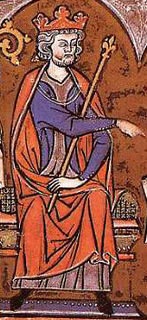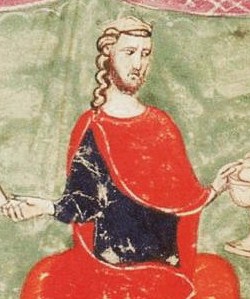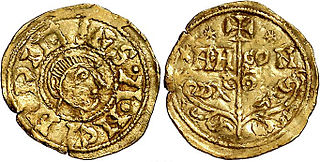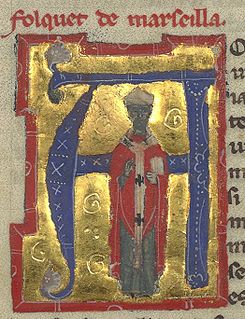Births
| | This section is empty. You can help by adding to it. (July 2010) |
| |||
|---|---|---|---|
| | This section is empty. You can help by adding to it. (July 2010) |

James I the Conqueror was King of Aragon, Count of Barcelona, and Lord of Montpellier from 1213 to 1276; King of Majorca from 1231 to 1276; and Valencia from 1238 to 1276. His long reign—the longest of any Iberian monarch—saw the expansion of the Crown of Aragon in three directions: Languedoc to the north, the Balearic Islands to the southeast, and Valencia to the south. By a treaty with Louis IX of France, he achieved the renunciation of any possible claim of French suzerainty over the County of Barcelona and the other Catalan counties, while he renounced northward expansion and taking back the once Catalan territories in Occitania and vassal counties loyal to the County of Barcelona, lands that were lost by his father Peter II of Aragon in the Battle of Muret during the Albigensian Crusade and annexed by the Kingdom of France, and then decided to turn south. His great part in the Reconquista was similar in Mediterranean Spain to that of his contemporary Ferdinand III of Castile in Andalusia. One of the main reasons for this formal renunciation of most of the once Catalan territories in Languedoc and Occitania and any expansion into them is the fact that he was raised by the Knights Templar crusaders, who had defeated his father fighting for the Pope alongside the French, so it was effectively forbidden for him to try to maintain the traditional influence of the Count of Barcelona that previously existed in Occitania and Languedoc.

Peter III of Aragon was King of Aragon, King of Valencia, and Count of Barcelona from 1276 to his death. At the invitation of some rebels, he conquered the Kingdom of Sicily and became King of Sicily in 1282, pressing the claim of his wife, Constance II of Sicily, uniting the kingdom to the crown.

Alfonso II, called the Chaste or the Troubadour, was the King of Aragon and, as Alfons I, the Count of Barcelona from 1164 until his death. The eldest son of Count Ramon Berenguer IV of Barcelona and Queen Petronilla of Aragon, he was the first King of Aragon who was also Count of Barcelona. He was also Count of Provence, which he conquered from Douce II, from 1166 until 1173, when he ceded it to his brother, Ramon Berenguer III. His reign has been characterised by nationalistic and nostalgic Catalan historians as l'engrandiment occitànic or "the Pyrenean unity": a great scheme to unite various lands on both sides of the Pyrenees under the rule of the House of Barcelona.

Sancho Ramírez was King of Aragon from 1063 until 1094 and King of Pamplona from 1076 under the name of Sancho V. He was the eldest son of Ramiro I and Ermesinda of Bigorre. His father was the first king of Aragon and an illegitimate son of Sancho III of Pamplona. He inherited the Aragonese crown from his father in 1063. Sancho Ramírez was chosen king of Pamplona by Navarrese noblemen after Sancho IV was murdered by his siblings.
James III, known as James the Rash, was King of Majorca from 1324 to 1344. He was the son of Ferdinand of Majorca and Isabella of Sabran.

Folquet de Marselha, alternatively Folquet de Marseille, Foulques de Toulouse, Fulk of Toulouse came from a Genoese merchant family who lived in Marseille. He is known as a trobadour, and then as a fiercely anti-Cathar bishop of Toulouse.

Peire Cardenal was a troubadour known for his satirical sirventes and his dislike of the clergy. Ninety-six pieces of his remain, a number rarely matched by other poets of the age.
Eudokia Komnene was a relative of Byzantine Emperor Manuel I Komnenos, and wife of William VIII of Montpellier.

Nuño Sánchez was a nobleman and statesman in the Crown of Aragon.

Peire Vidal was an Old Occitan troubadour. Forty-five of his songs are extant. The twelve that still have melodies bear testament to the deserved nature of his musical reputation.

Jofre de Foixà was a troubadour from Foixà in the Empordà, the second son of Bernard of Foixà.

Ademar lo Negre was a troubadour from Languedoc in the early thirteenth century. He was originally from Château-Vieux (Castelveill), which was under the jurisdiction of the Trencavel lords of Albi at the time. He was patronised by Peter II of Aragon and Raymond VI of Toulouse and even spent some time at the court of Ferdinand III of Castile. Four cansos of his survive.
Bernat or Bernart d'Auriac was a minor troubadour notable mainly for initiating a cycle of five short sirventes in the summer of 1285. According to a rubric of the chansonnier in which the cycle is preserved, Bernart was a mayestre de Bezers.
Pere Salvatge or Peire/Peyre Salvagge was a Catalan troubadour of the late thirteenth century. He is most notable as a constant attendant at the court of Peter III and Alfonso III of Aragon. He may be the same person as the Peironet who composed poems with Peter III.

Guillem or Guilhem Magret was a troubadour and jongleur from the Viennois. He left behind eight poems, of which survive a sirventes and a canso with melodies.
N'At de Mons was a troubadour of the latter half of the thirteenth century. He was from Mons, near Toulouse. Kings James I of Aragon (1213–76) and Alfonso X of Castile (1252–84) acted as his patrons and he addressed "La valors es grans e l'onors", a sirventes on the rights of kings, to James. At is also credited as the author of a cobla esparsa, "Reys rix romieus mas man milhors".
Lo Bord del rei d'Arago, literally "The Bastard of the King of Aragon", is the name assigned to the composer of three coblas in an Occitan chansonnier. Lo Bord wrote two peticions and one remissio to Rostanh Berenguier de Marselha, who also wrote a fourth peticion of his own to Lo bord, but without a surviving response. This poem without a response, Pos de sa mar man cavalier del Temple, contains internal clues permitting it to be dated to between 1291 and 1310. All these coblas were edited and published by Paul Meyer in Les derniers troubadours de la Provence.
Eleanor of Aragon, Countess of Tolouse (1182–1226) was a daughter of King Alfonso II of Aragon and Sancha of Castile, Queen of Aragon. She married Raymond VI, Count of Toulouse.